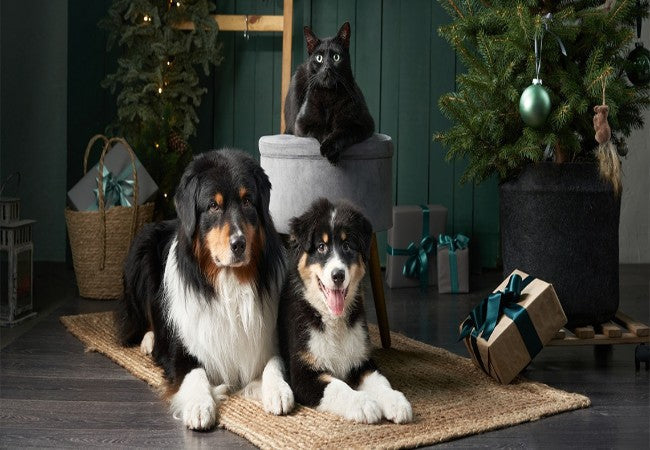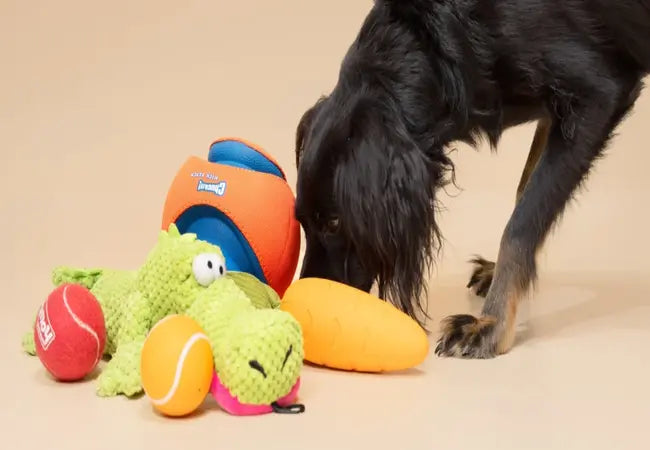Leash Train Your Dog 2025: Vet Approved Guide for Calm Walks 🐾

In this article
Leash Train Your Dog 2025: Vet Approved Guide for Calm Walks 🐾
By Dr. Duncan Houston BVSc
🔧 Why Leash Training Matters
Walking calmly on a leash isn’t natural for dogs—it’s a skill we teach for safety, control, and harmony on walks. Strong leash manners help prevent pulling injuries, overexcited behavior, stress, and leash reactivity with other dogs or people.
🎒 Choosing the Right Gear
- No-pull harnesses (e.g., front-clip) distribute pressure safely and reduce pulling.
- Head halters (e.g., Gentle Leader) give more direction control—but introduce gradually to avoid stress.
- Avoid choke chains, prong collars, and retractable leashes—they can hurt your dog or reinforce pulling behavior.
- Use a 4–6 ft sturdy leash (nylon or leather) for better control.
🏠 Begin Indoors or in a Quiet Space
Start training in low-distraction zones—your living room or backyard :
- Clip leash to harness; let your puppy walk around to get used to the sensation.
- Use treats or clicker rewards when your dog walks near you or stops when you stop.
- Keep sessions short (5–10 min) and fun—end on a positive note.
🎯 Reinforcing Attention & Loose-Leash Walking
- Reward your dog for paying attention when the leash is slack.
- When the leash tightens, stop walking until it relaxes—leash tension means no forward movement.
- Mark and reward steps toward you: “Yes!”—treat—“Good leash!”.
- Grow duration gradually—reward after 2 steps, then 4, then 10.
🌳 Progress to Outdoors Gradually
Move training outdoors once indoor loose-leash walking is consistent :
- Allow exploration on a long line (10–30 ft), then recall and reel in slack before walking close.
- Use attention cues (“Look!”) and treat rewards when your dog focuses on you.
- In low-distraction areas, repeat indoor reward drills outdoors.
🛑 Handling Pulling & Reactivity
- If pulling occurs, stop immediately—reemerge attention before continuing.
- For leash reactivity (barking or lunging), maintain a buffer zone—reward calm below threshold.
- Gradually decrease distance from triggers as calm behavior improves.
- Clicker training works well: mark calm focus, then treat, before approaching a trigger.
📆 Training Routine & Consistency
- Short 5–10 minute sessions, 2–3 times daily—frequent practice beats occasional long walks.
- Practice in diverse locations: quiet streets, parks, pet-friendly stores—proofing helps generalize behavior.
- Involve family members—everyone must reward the same criteria.
🧩 Additional Tools & Techniques
- Clicker training: marks desired behavior clearly in noisy environments.
- Treat pouch: keeps rewards accessible for timely reinforcement.
- High-value treats: especially in early training or near distractions.
📋 Dr Houston’s Leash Training Checklist
- ✔️ Use safe gear: no-pull harness or head halter
- ✔️ Train indoors first with rewards for loose leash
- ✔️ Reward attention frequently—use high-value treats
- ✔️ Stop movement when leash tightens; move only when loose
- ✔️ Progress slowly to outdoor training with long line
- ✔️ Address reactivity by rewarding calm below threshold
- ✔️ Practice consistently, in varied environments, with everyone using same cues
- 📱 Contact Ask A Vet for leash reactivity or gear guidance
🌟 Final Thoughts
Leash training is a foundational dog skill that requires patience, positivity, and consistency. By using reward-based methods, proper gear, and stepwise progression from indoors to outdoors—plus gentle handling of pulling and reactivity—you’ll build calm, confident walking habits and a stronger bond. If you hit a snag, ask A Vet is here to help with personalized advice anytime. 📱🐶❤️






